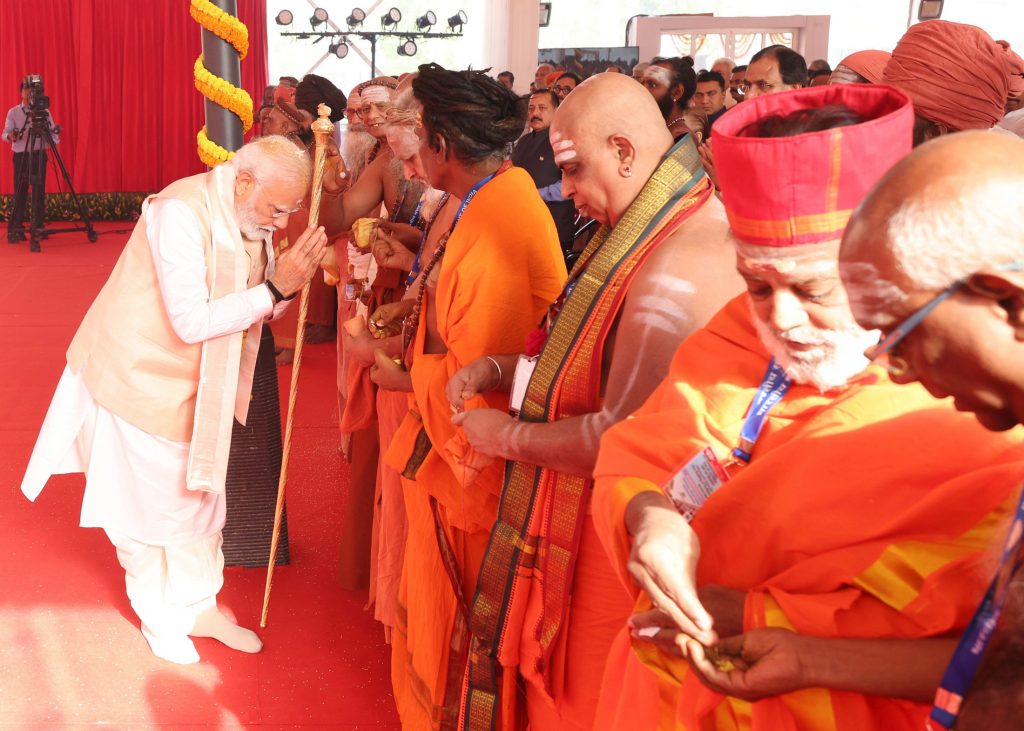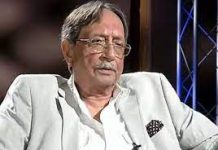
The Sengol saga is more about how the BJP can spin things to its advantage; it is about its ability to drum beat what it wants people to believe and its bid to exaggerate and magnify forgotten facts.
Till the BJP government raked it up, the majority of north Indians could not even pronounce the word Sengol, leave alone knowing what it meant or understanding its significance. Thanks to the BJP, the Sengol, today, is kind of a household name.
It was no less than the country’s Home Minister who took it on himself to lead the Sengol campaign, if one can use the word for the unsavoury controversy surrounding the golden sceptre. And while doing so, he blamed it all on Nehru.
It is no one’s case to defend the Nehru-Gandhi family or their bid to appropriate India’s legacy and present it as their own; or distort History to relegate all else except their lineage to the background. They have done that liberally and cashed in on the politics entirely to their own benefit.
It is this misappropriation that has kept them centre-stage and ensured that their progenies continue to use the platform and use their self- styled entitlement to remain relevant.
Ironically for them, Independence is synonymous with Nehru’s Tryst with Destiny speech which the Congress does not tire of playing over and over again.
As for the Sengol, the word is alien to them as to many others. They are perhaps more at home with the golden walking stick description that was used to describe the Sengol.
By now, much is known about the Sengol turned walking stick.
For the uninitiated, the Sengol is a five feet long, gold coated silver sceptre which was crafted on the occasion of the British handing over power to India in 1947.
Jewellers in Chennai chiselled it after Lord Mountbatten asked Nehru how they should mark the moment of the ceremonial transfer.
It was C. Rajagopalachari, India’s last Governor General, who invoked the Tamil tradition of a priest handing over a sceptre to a King who is ascending the throne.
Essentially, a tradition followed by Chola kings, Rajagopalachari asked Nehru to follow the same practice. In 1947, the head of a Shaivite monastery presented the Sengol to Nehru who then sent it to the Allahabad Museum.
Some 75 years later, it was retrieved by the Government and received by Prime Minister Narendra Modi on the eve of the official inauguration of the new Parliament building.
On his part, the Prime Minister “revived” History by placing it near the Speaker’s seat in Parliament: “This ‘staff of righteousness’ will shine near the Lok Sabha Speaker’s podium as a national symbol of the Amrit Kaal, an era that will witness the new India taking its rightful place in the world”, Union Home Minister Amit Shah said, even as new Parliament building was inaugurated to the tune of Nagaswaram and chants by priests.
Of course there are conflicting reports on whether the sceptre was handed over by Lord Mountbatten to Nehru as a sign of transferring power from the British to India or whether it was handed over to Mountbatten by seers who handed it back to them after which it was taken to Nehru’s residence and handed to him; whether it was kept at Anand Bhawan as the BJP claims or the Allahabad Museum in Prayagraj as some reports have suggested; and whether it was labelled as a “golden walking stick” gifted to Nehru or simply a “golden stick” gifted to Pandit Jawaharlal Nehru.
Castigating the Congress for not giving the Sengol “due respect”, Prime Minister Modi said that it was displayed as a walking stick at Anand Bhawan in Prayagraj.
As for Mountbatten, there is no official document to support that the Sengol was presented to him before being handed over to Nehru.
Naysayers are quoting several texts including Yasmin Khan’s The Great Partition which mentions that the handover of the sceptre “took place at a private residence as part of the celebration and not as an official ceremony.”
But this is less about the veracity of claims and more about how the BJP can spin things to its advantage; it is about its ability to drum beat what it wants the people to believe and its attempt to exaggerate and magnify little known or forgotten facts.
Having said that, one cannot take away from the BJP its bid to dig information that the nation was oblivious of or kept ignorant about.
Call the present dispensation spin masters or past rulers oblivious but the fact remains that this time around the BJP has brought to the fore a forgotten fact of History and one that relates to India’s Independence.
At one level it may be argued that the Sengol ritual had nothing to do with the midnight hour when India breathed freedom: the “golden stick”, walking or not, was one of the many gifts that Nehru received on the eve of India’s freedom.
Be it as it may, the versions are conflicting as is evidence.
That said one must give to the BJP its ability to convert a story and trade it as a historical fact: in other words the ability to create something out of nothing; to flag symbolism and give it a colour of nationalism and tell people that they were hoodwinked by those who governed in the past.
Hoodwinked may be a strong word but it cannot be denied that a lot that should have been told was kept under wraps.
On one count this may be because those in power in the past knew little and on another because they deliberately worked towards making Nehru more important than the nation and ensuring that everything that is India is thanks to its first Prime Minister.
Even while the BJP works overtime to erase the legacy, and rightly so, the Prime Minister Office does gear up to inflow of information. Had it not been so, Padma Subramanyam’s letter would not have seen the light of the day.
To put this into context, it was classical dancer Padma Subrahmanyam who wrote to the Prime Minister about the existence of the Sengol: “I didn’t know about the Sengol episode in our history because no textbook has any reference to it. I thought Sengol had to be publicized. So I translated the entire Tughlaq article into English and wrote a covering letter to the Prime Minister stating that the Sengol must be brought out. This is how the whole thing started,” Subrahmanyam told a news agency.
Even while this spurred a chain of events resulting in the Sengol being resurrected and given its due place, a modest Subrahmanyam said that like the squirrel mentioned in the Ramayana she has done her “little might”.
As a consequence of this “little might”, the Sengol now stands “unbent in the new Parliament”, to quote Subrahmanyam.
Those familiar with the functioning of past governments, however, confirm that left to the Congress the letter would, perhaps, have been trashed.
Nonetheless, the BJP has done well in revisiting History and doing what it takes to correct it.
Call it politics if you will, given that it is being alleged that the Sengol is being used to woo the electorate in Tamil Nadu.
Not one to mince words, Home Minister Amit Shah is on record asking the people of Tamil Nadu to elect more than 25 MPs of the BJP-led National Democratic Alliance in the 2024 Lok Sabha election. This, he said, would be an “expression of gratitude to Prime Minister Narendra Modi for installing Sengol, a legacy of the Chola era, in the new Parliament”.
The political implication could not have been more direct than this.
That notwithstanding, the resurgence of the Sengol was long overdue and one must castigate the Congress for ignoring it, wilfully or out of ignorance, and relegating a slice of History to the background.
Also, the 100-year old Party cannot be forgiven for showcasing the historic transfer of power to the Tryst with Destiny speech that Nehru delivered at the stroke of midnight. That sure was important but there was much more preceding the historic event including the Sengol ritual which the BJP has well cashed in on and made History.











